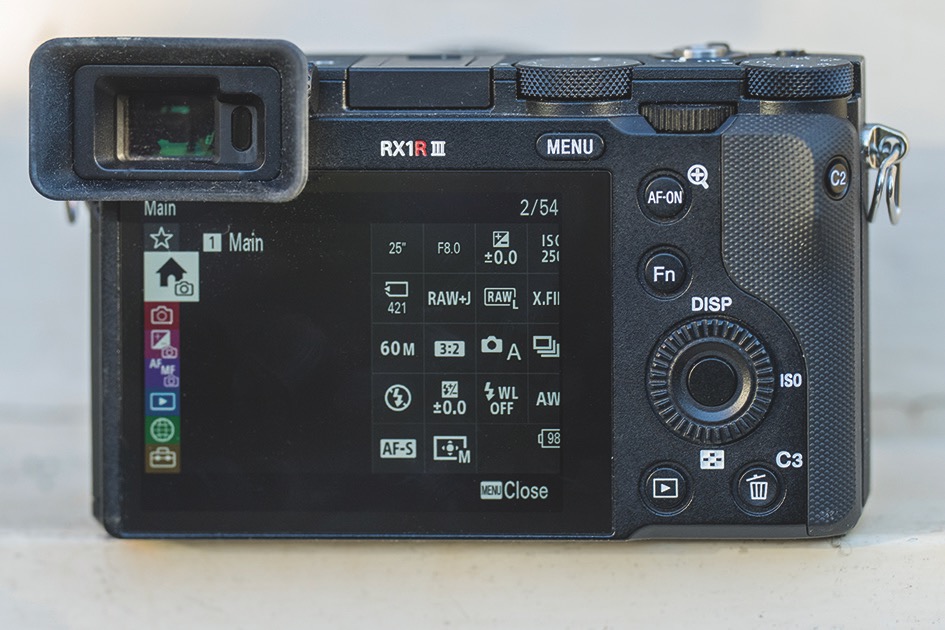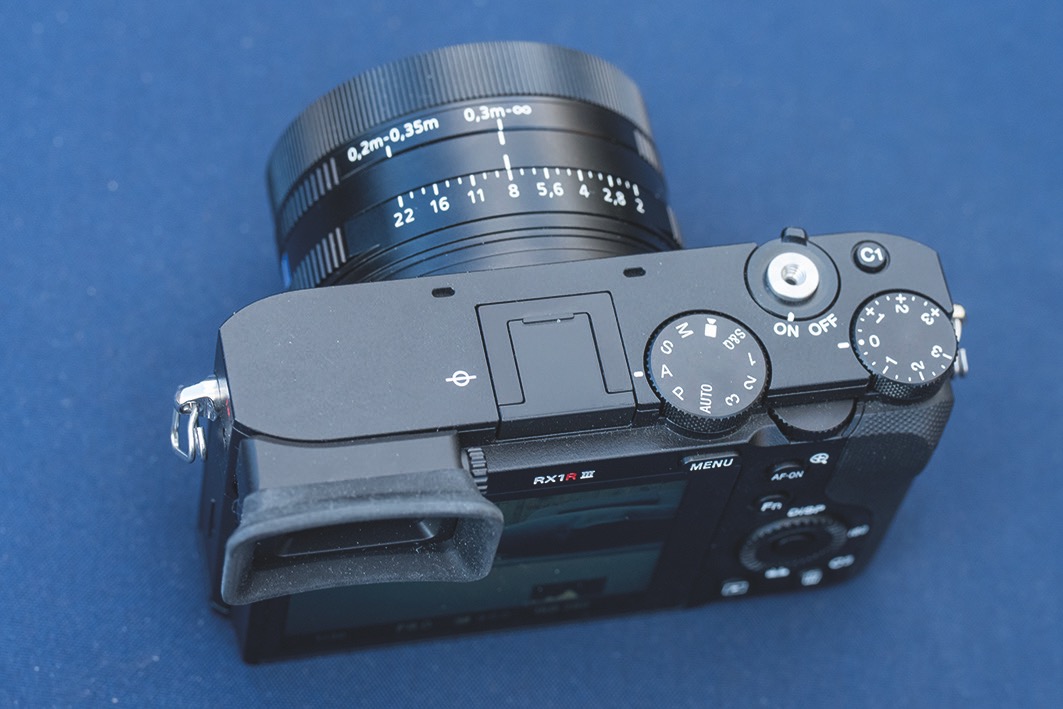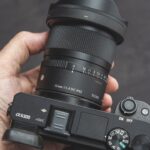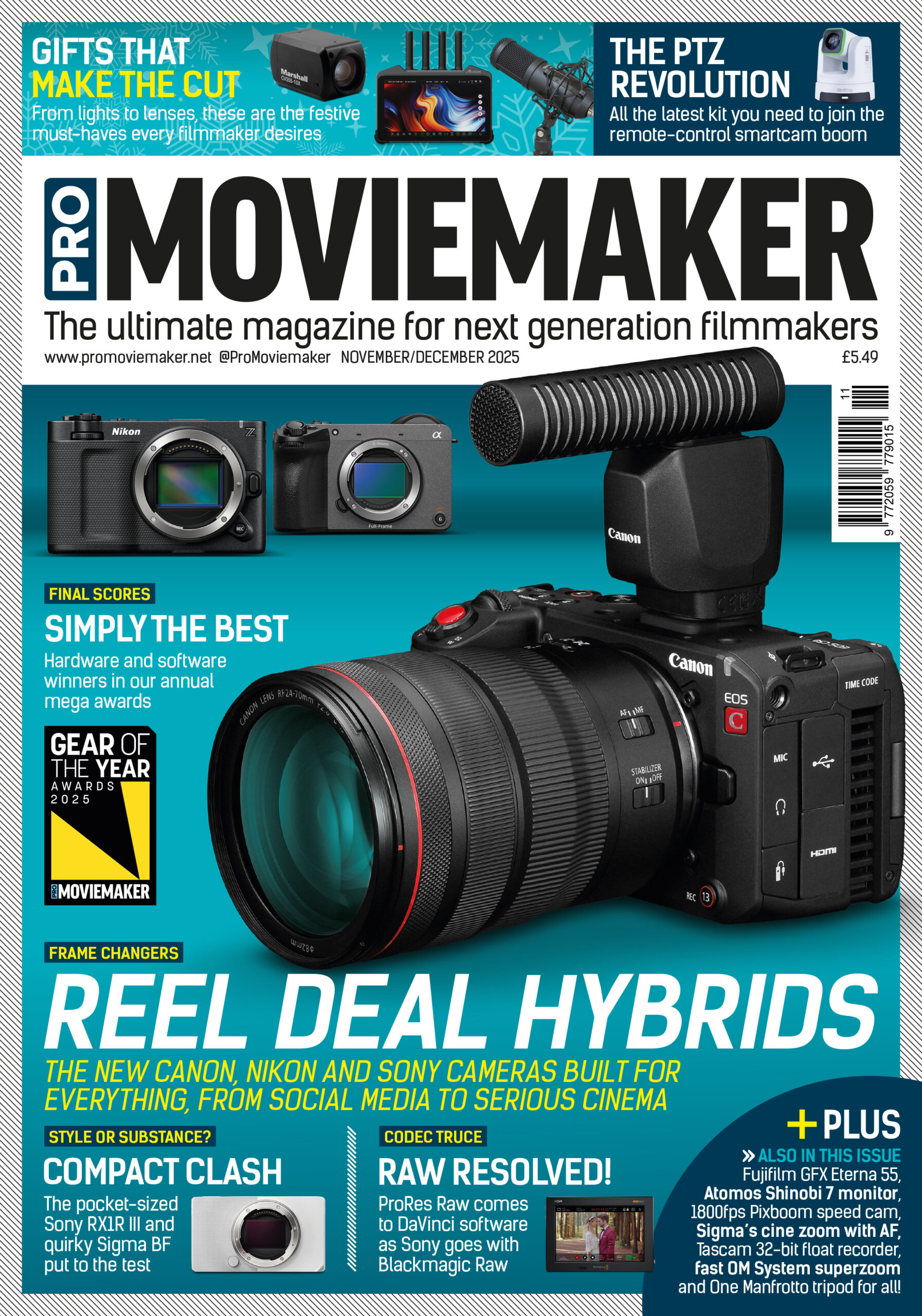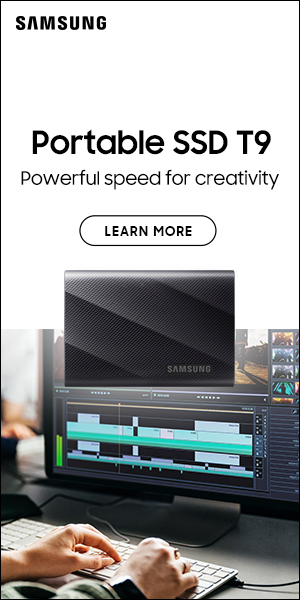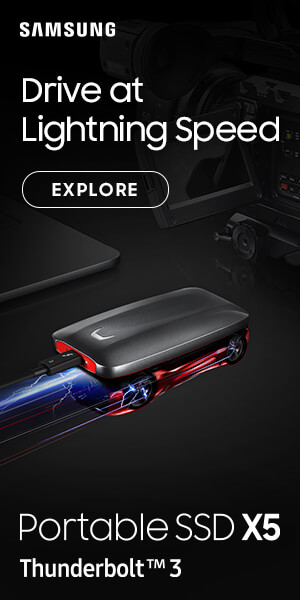
Big test: Sony RX1R III
Posted on Nov 20, 2025 by Pro Moviemaker
The compact for deeper pockets
Sony’s pricey RX1R III has a 61-megapixel sensor in a body small enough to slip into your coat pocket
Words Adam Duckworth
When you’re a filmmaker or content creator, the gear you reach for often comes down to compromise. Do you want a camera with the largest sensor, the widest lens options and the most sophisticated video codecs? Or do you want something discreet, compact and quick to set up – a tool you’ll carry every day that won’t bring attention to you when using it?
Phones are at one end with rapidity and stealth, while cinema cameras are at the other with sheer firepower. But what about a middle ground? That’s where Sony’s new RX1R III makes an unexpected return.
Full-frame power in a compact body
It isn’t just a high-res, photo-first compact. The RX1R III is a full-frame filmmaking device built around the same 61-megapixel Exmor R CMOS sensor and Bionz XR processor as the A7R V. Except in the RX model, those components live inside a body small enough to slip into a coat pocket.
That much image quality in a camera that looks closer to a point and-shoot, plus the colour tools and autofocus intelligence Sony’s hybrids are known for, is compelling for those who value subtlety and spontaneity.
Advanced autofocus and tracking
The most striking thing about the RX1R III is how much of Sony’s latest imaging pipeline it carries into a form factor designed for blending in. With AI-powered autofocus covering nearly 80% of the frame and subject tracking that locks onto eyes, faces and even objects with uncanny accuracy, it’s one of the best focusing systems on any compact camera, ever. For filmmakers shooting run-and-gun, that matters. It means your attention can stay on framing and movement rather than worrying about sharpness.
Professional video capabilities
Video performance isn’t quite on par with Sony’s dedicated cinema or hybrid cameras, but it’s far from an afterthought. The RX1R III records oversampled 4K at up to 30p in 10-bit, complete with S-Cinetone for instant cinematic colour and support for user LUTs. There’s also 120fps Full HD recording for smooth slow motion, albeit limited to 8-bit. It’s not going to satisfy those hunting for 8 or 4K/60p, but for creators prioritising mobility, 10-bit 4K in such a tiny device is still a significant factor. And crucially, it has a microphone input, allowing you to pair it with an external mic for content that feels polished without building a full rig.

Fixed Zeiss 35mm f/2 lens
One of the reasons the RX1R III feels so filmic is thanks to its fixed lens. A Zeiss Sonnar T* 35mm f/2 sits permanently on the front, just like it did on the Mark II. In creative terms, that’s both liberating and limiting. The focal length is a storytelling classic, versatile enough for street scenes, interviews and handheld B roll. Wide open, the f/2 aperture can give a shallow depth-of-field that adds cinematic separation to your subject. At the same time, the lens isn’t flawless. Edges are softer than today’s sensors can really hide, especially at wider apertures, and with only eight elements in seven groups it lacks the optical complexity of modern interchangeable primes. But there’s character here, and character is something content creators often crave more than clinical perfection.
Step crop and macro options
Sony has added a feature called Step Crop Shooting, which lets you digitally toggle to 50mm or 70mm views in stills mode. It’s essentially an in-camera crop, but with 61 megapixels, you retain plenty of detail. For filmmakers, it’s less useful as cropping happens in post anyway, but it reinforces that this is a camera designed to do more with one lens than most people expect. There’s also a macro switch on the lens barrel, allowing you to focus at 20cm – perfect for product shots.
Design and usability
Ergonomics remain the biggest reminder that this is not a purpose-built cinema tool. The RX1R III has a built-in EVF rather than the pop-up finder of its predecessor, but the rear screen is fixed. For video creators used to an LCD for vlogging or monitoring at odd angles, this will feel restrictive.
Also, there’s no in-body stabilisation, meaning handheld video relies on digital stabilisation or external rigs. There’s a mic jack but no headphone output, limiting professional audio monitoring on-set. These omissions sting more at a high price point as creators expect hybrid flexibility.
But, every time you pick it up, you’re reminded why the RX1R III is unique. It’s discreet, stylish and small. You can walk through a festival, pull it out in a quiet cafe or hold it steady on a gimbal for mirrorless cameras, and your results will look identical to those caught on gear four times the size. In an age where most creators rely on their phones or bulky hybrid cameras, there’s something powerful about a tool that splits the difference with this much finesse.
At £4199/$5098, the RX1R III is a luxury, and one that faces competition from Sony’s own interchangeable lens bodies. But for filmmakers and content creators who need cinematic image quality in the smallest possible form, it’s an attractive option. The RX1R III doesn’t just revive the notion of a premium compact but also gives the format a new purpose within modern filmmaking.
Specifications
- Price: £4199/$5098
- Sensor: 35.7×23.8mm full-frame Exmor R CMOS, 61 megapixels
- Stills formats: JPEG, HEIF, Raw in 1:1, 3:2, 4:3, 16:9, 14-bit
- Video formats: XAVC S and S-I, 4:2:0 8-bit/4:2:2 10-bit, DCI 4K at 30fps, FHD to 120fps. 4:2:2 8/10-bit output via HDMI
- ISO range: 100-32,000 in manual, 100-12,800 auto
- Shutter speeds: 30secs to 1/8000sec electronic plus B
- Lens: 35mm Zeiss Sonnar f/2, 8 elements in 7 groups
- Filter size: 49mm
- Aperture range: f/2-22
- Minimum focus: 30cm, 20cm in Macro
- Autofocus: 693 phase-detection points covering 78% of the sensor
- Metering: Multi-zone, average, spot, centre-weighted, highlight weights
- Max frame rate: 5fps
- LCD: 2.95in touchscreen, 2.36 million dots
- Viewfinder: Electronic OLED, 0.7x magnification
- Storage: Single SD/SDHC/SDXC UHS-II card slot
- Connectivity: Bluetooth, Wi-Fi, micro HDMI Type D, USB-C, 3.5mm audio in
- Dimensions (wxhxd): 113.3×67.9×87.5mm/4.5×2.7×3.5in
- Weight: 454g/1lb
The verdict
The Sony RX1R III is a compact image quality powerhouse built for creators who value portability, discretion and excellence in stills. It excels as an everyday carry, with sharp files and fast autofocus in a pocketable form. But no IBIS, a fixed screen, lack of serious weatherproofing and a high price go against it.
How it rates
Features: 8
It has so much tech from the Alpha series but omits a lot of high-quality options
Performance: 8
Decent colours but the fixed lens is not the sharpest at the edges
Handling: 8
Uses the finely honed controls of Sony’s mirrorless cameras but poor screen and EVF
Value for money: 8
It’s a lot of cash for a compact, even though it has Sony’s prized 61-megapixel sensor
Overall rating: 8/10
For someone that always has a camera, it captures everyday life in amazing detail
- Pros: Amazing image quality, super-compact and stealthy
- Cons: Fixed screen, no IBIS, no weatherproofing, pricey
This review was first published in the November/December 2025 issue of Pro Moviemaker

